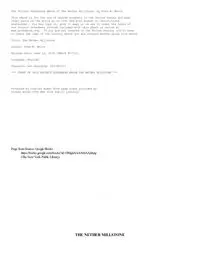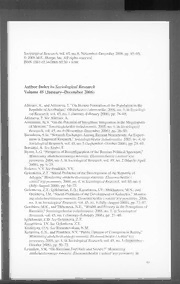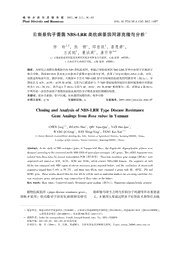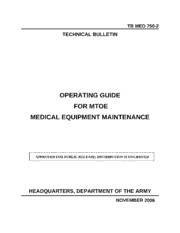
Operating Guide for TOE Medical Equipment Maintenance PDF
Preview Operating Guide for TOE Medical Equipment Maintenance
TB MED 750-2 TECHNICAL BULLETIN OPERATING GUIDE FOR MTOE MEDICAL EQUIPMENT MAINTENANCE APPROVED FOR PUBLIC RELEASE; DISTRIBUTION IS UNLIMITED HEADQUARTERS, DEPARTMENT OF THE ARMY NOVEMBER 2006 TB MED 750-2 Technical Bulletin HEADQUARTERS DEPARTMENT OF THE ARMY NO. MED 750-2 WASHINGTON, DC, 1 NOVEMBER 2006 Operating Guide for TOE Medical Equipment Maintenance You can help improve this bulletin. If you find any mistakes or if you know a way to improve procedures, please let us know. Mail a memorandum to: U.S. Army Medical Materiel Agency, ATTN: MCMR-MMO-SM, 1423 Sultan Drive, Suite 100, Fort Detrick, MD 21702-5001. A reply will be furnished directly to you. Contents CHAPTER 1 Introduction 1 Section I. General 1 Section II. Responsibilities 1 Section III. Maintenance Publications and Directives 3 Section IV. Maintenance Management 3 CHAPTER 2 Maintenance and Repair Procedures 5 Section I. Maintenance Procedures 5 Section II. Workload Control 6 Section III. Forms and Records Management 7 CHAPTER 3 Man-hour Accountability 11 CHAPTER 4 Repair Expenditures 15 Section I. Repair Eligibility and Evacuation 15 Section II. Maintenance Expenditure Limits 16 Section III. Waivers 18 Section IV. Life Expectancy 18 CHAPTER 5 Scheduled Services 21 Section I. General 21 Section II. Preventive Maintenance Checks and Services 21 Section III. Calibration/Verification/Certification 22 Section IV. Electrical Safety 22 CHAPTER 6 Management and Control of Diagnostic X-Ray 23 CHAPTER 7 Technical Inspection For Issue 25 Section I. General 25 ___________ This is a new Department of the Army Technical Bulletin i TB MED 750-2 Section II. Technical Inspections 25 CHAPTER 8 Technical Inspection for Turn-In or Transfer 27 Section I. General 27 Section II. Technical Inspections 27 Section III. Serviceability Inspection Checklist 27 Section IV. Condition Coding Medical Equipment 29 CHAPTER 9 Repair Parts, Tool Control, and Test, Measurement, and Diagnostic Equipment (TMDE) 31 Section I. Repair Parts Management 31 Section II. Tool Control 33 Section III. Test, Measurement, and Diagnostic Equipment 33 Appendixes Appendix A References 35 Appendix B Medical Equipment Reporting Procedures 39 Appendix C Maintenance Standing Operating Procedures 43 Appendix D Desk Reference Manuals 45 Appendix E Standard Army Management Information System 47 Appendix F Safe Medical Devices Act 49 Appendix G Battery Maintenance Program 51 Appendix H Equipment Requiring Calibration/Verification/Certification 53 Appendix I Warranty/Contract Program 55 Appendix J Medical Equipment Maintenance Evaluation and Assessment 57 Appendix K Preventive Maintenance Inspection Checklists 59 Appendix L Sample Combat Support Hospital Internal Standing Operating Procedures 61 Appendix M Sample Combat Support Hospital External Standing Operating Procedures 71 Appendix N Medical Standby Equipment Program 81 Appendix O Army Prepositioned Stocks 83 ii TB MED 750-2 Glossary Abbreviations 85 Terms 89 List of Illustrations Figure 2-1. Sample DA Form 2404 to document a deficiency identified during operator PMCS 8 Figure 2-2. Sample DA Form 2407 to request maintenance support 9 Figure 3-1. Individual direct labor man-hours worksheet. 12 Figure 3-2. Instructions for preparing the individual direct labor man-hours worksheet. 13 Figure 4-1. Decision matrix for condition coding medical equipment. 17 Figure 4-2. Sample maintenance request depicting equipment coded H 19 Figure 4-3. Uneconomically reparable equipment disposition memo. 20 Figure 7-1. New equipment issue flow chart. 26 Figure 8-1. Equipment turn-in flow chart. 28 Figure B-1. Sample of a completed DA Form 2406. 41 Figure B-2. Sample of a completed DA Form 2406—Continued. 42 Figure J-1. Sample Commander’s Medical Equipment Maintenance Assessment Checklist. 57 Figure L-1. Sample CSH Medical Maintenance Internal SOP. 61 Figure M-1. Sample CSH Medical Maintenance External SOP 71 iii TB MED 750-2 This page intentionally left blank iv TB MED 750-2 CHAPTER 1 Introduction Section I. General 1-1. Purpose a. This operating guide provides policy and procedures used to manage and operate Table of Organizational Equipment (TOE) medical maintenance operations. Use it in concert with the directives and policies prescribed by Army regulations (ARs) and other regulatory guidance. b. This operating guide also provides uniform guidance and direction to standardize operating procedures. Paraphrased in this bulletin are major policies and responsibilities established in other regulations to afford an understanding of their interaction with medical equipment maintenance procedures. 1-2. Applicability This operating guide applies to all Army TOE organizations authorized Medical Equipment Repairers (MER), Military Occupational Specialty (MOS) 68A. 1-3. References Appendix A lists related publications in addition to prescribed and referenced forms. These references provide the regulatory basis for the guidance contained in this bulletin. Maintenance activities will maintain a library of those publications used on a frequent basis, and be knowledgeable of the locations of less frequently used publications. 1-4. Explanation of abbreviations and terms Abbreviations and special terms used in this pamphlet are explained in the glossary. 1-5. Standards of medical maintenance Equipment used by medical personnel is of critical importance since its purpose is to save lives and prevent suffering of the sick and wounded. Therefore, the highest standards of maintenance for medical equipment are mandatory. Section II. Responsibilities 1-6. Commanders Maintenance of equipment is a command responsibility. Adequacy and completeness of a unit’s maintenance program are a reflection of command interest. Maintenance operations, regardless of the unit size or mission, are analyzed on nine factors that can affect maintenance: command, personnel, time, tools, repair parts, records, publications, facilities, and communications. Command is the most critical factor since it is the only factor that has direct influence on each of the others. Commanders will: a. Publish and make compulsory a directive emphasizing the responsibilities of equipment operators to perform effective operator maintenance, and the accountability of supervisors and leaders to ensure operators are properly trained and competent in the use and care of medical equipment. b. Allocate adequate time for equipment operators (EO) to perform operator preventive maintenance services on a scheduled basis. Operator level maintenance should be included in the unit’s training schedule. c. Ensure current operator manuals for all medical equipment are on hand and readily available to the operators. d. Evaluate the performance of operator and unit maintenance programs through inspections. Correct deficiencies found during inspections. e. Establish periodic in-service and/or formal training in operator maintenance programs for operators. f. Prevent the abuse of materiel under user control. Investigate the evidence of abuse and take corrective action. g. Program periodic in-service training, formal Army training, and/or manufacturer training for equipment maintainers, particularly for new equipment introduced into the activity. h. Use assigned MERs for medical maintenance duties. The MER should not be assigned additional duties that may adversely affect the maintenance posture and readiness of medical equipment. i. Make available the resources (i.e. tools, parts, and test equipment) necessary to maintain the organization’s medical equipment. j. Provide maintenance services to associate and subordinate activities on a scheduled basis. k. Provide the best maintenance facilities possible. Arrange maintenance facilities to efficiently use the allotted space. The shop should be as centrally located as possible, be accessible, and have ample, secure, storage space for repair parts, supplies, tools, test equipment, and equipment awaiting repair and/or parts. l. Maintain the appropriate medical equipment maintenance records IAW TB 38-750-2, Maintenance Management Procedures for Medical Equipment, or approved automated equipment management system. m. Maintain organization’s medical equipment in a fully mission capable status IAW AR 220-1, Unit Status Reporting and AR 700-138, Equipment Readiness Reporting. ___________ This is a new Department of the Army Technical Bulletin 1 TB MED 750-2 n. Medical equipment repairers should be included in the Medical Proficiency Training (MPT) program. Participation should not detract from the unit’s medical maintenance posture. o. Provide communication capability to ensure DA approved automated medical equipment maintenance and performance reporting procedures are achieved. To the maximum extent possible, medical maintenance automation systems should be provided broadband access to ensure effective communication is attained. 1-7. Maintenance managers The senior medical equipment repairer will accomplish organizational maintenance for medical equipment in a timely, economical, and professional manner. Due to ever-changing operational requirements and conditions, effective maintenance management requires leadership, planning, organization, assignment of responsibilities, functions and resources, direction, and flexibility. Management of resources (tools, test equipment, standby equipment, repair parts, time, and personnel) should be a daily concern. All resources must be present in sufficient quantity when needed to accomplish the maintenance mission. The establishment of priorities is a primary task. Managers will: a. Attain the basic concepts, objectives, and policies of The Surgeon General for the maintenance of medical equipment. b. Effectively achieve the maintenance of Army-owned or supported medical materiel throughout the equipment’s life cycle. c. Execute maintenance programs for the repair, preventive maintenance checks and services (PMCS), electrical safety testing and calibration/verification/certification (CVC) of medical materiel. d. Establish Standing Operating Procedures (SOPs) for the operation of the maintenance activity IAW command guidance. See appendix C which addresses SOP requirements and the applicable appendix for a sample SOP depending on the type of unit assigned. e. Review internal and external SOPs minimally every 18 months and update to reflect changes in DA maintenance policies. f. Provide planning, guidance, and assistance to other organizational elements that impact on the maintenance mission. This includes providing guidance and assistance to: (1) Commanders and staff in the development of medical maintenance related educational and training programs for equipment operators and assigned MERs; (2) Personnel Division (S-1) in the timely reporting of projected personnel losses. g. Establish a system for identifying defective equipment to alert potential users. Use of equipment serviceability tags DD Form 1577 and DD Form 1577-2. h. Keep Commanders and staff informed on the status of medical equipment maintenance and associated programs. i. Establish a master file of both operator and maintenance manuals in the maintenance activity for all medical equipment. Maintenance literature can be in either paper or electronic format. j. Establish a functional file system to ensure maintenance records are maintained. k. Establish and maintain a library of current administrative publications needed in the management of the maintenance activity. l. Facilitate medical equipment repairer participation in a Medical Proficiency Training (MPT) program. m. Identify activities requiring medical maintenance support from your activity. n. Identify the activity responsible for providing your next level of medical maintenance support. 1-8. Supervisory/leader personnel Although supervisory duties and responsibilities are inherent in the management of all sub-functions of a medical equipment maintenance activity, those listed herein pertain primarily to maintenance and repair operations. Supervisors will: a. Ensure the assignment of scheduled and unscheduled workloads to qualified repairers commensurate with their training and skill level. b. Maintain timely and informative communications with medical equipment operators/hand-receipt holders concerning maintenance services. c. Ensure the interpretation and application of maintenance service procedures are according to manufacturer’s specifications and instructions. d. Ensure individuals are knowledgeable of regulatory requirements such as Center for Devices and Radiological Health (CDRH), Codes of Federal Regulation (CFR) and National Fire Protection Association (NFPA) codes. e. Ensure MERs are knowledgeable of hazard communications (HAZCOM), lockout/tagout and other applicable Occupational Safety and Health Act (OSHA), Department of the Army (DA), and local safety program requirements. 1-9. Medical Equipment Repairers Maintenance services must be accomplished within established guidelines in a timely, professional manner. Repairers will: a. Adhere to safety procedures during maintenance operations. b. Bring unsafe equipment operations to the attention of user/operator personnel and their supervisors, by identifying defective equipment and alerting potential users. c. Maintain accountability of entrusted resources. Of significant importance is the availability and accountability of time and effective man-power utilization. See chapter 3 for instructions on accountability of time and use of timesheets. d. Perform PMCS and CVC services according to the manufacturer’s instructions or Army technical manuals (TMs). Perform electrical safety inspections and testing IAW NFPA 99 and this bulletin. 2 TB MED 750-2 e. Ensure documentation and associated maintenance forms are legible and in compliance with local SOPs and other applicable directives. f. Assume personal responsibility for identifying and pursuing professional or technical training and career development. 1-10. Equipment Operators The range and complexity of medical equipment used to provide healthcare requires that operators and their supervisors be responsible for their portion of the activity maintenance program. The operators and/or supervisors will: a. Perform before, during, and after operation maintenance tasks according to TMs and manufacturers’ instructions utilizing DA Form 2404. Operator tasks usually consist of the care and cleaning of exterior surfaces, components, and accessories. Operator tasks also include the replacement of bulbs, tubing, etc., that are easily accessible and do not require tools or test equipment. b. Promptly report malfunctioning equipment to immediate supervisor and the supporting medical maintenance activity. c. Initiate a maintenance request for any maintenance services beyond those authorized as part of the operator’s daily operations. d. Maintain operator manuals for all medical equipment. e. Maintain accountability of medical equipment and sets. Section III. Maintenance Publications and Directives 1-11. Commander’s implementing directives Commanders will publish a maintenance support directive for use by their customers and supported activities. 1-12. Standing operating procedures a. Each activity having an organic medical maintenance capability will publish an internal SOP The internal SOP will designate individual responsibilities and, as a minimum, will provide instructions for the performance of maintenance tasks related to the areas identified in appendix C. b. Each maintenance activity will develop and publish an external SOP. This SOP will establish the procedures a customer must follow when acquiring maintenance support. 1-13. Desk reference manuals a. In addition to the internal SOP, the maintenance activity should develop a desk reference for each MER’s use. Consider the development of a desk reference manual for repair parts, tool room operations, and automated record keeping procedures. b. Desk reference manuals give a person performing routine day-to-day tasks the detailed instructions necessary to complete the tasks with the least amount of supervisory assistance. The manual should contain step-by-step procedures in sufficient detail to enable a newly assigned repairer to perform assigned duties. c. Providing adequate instructions and sample formats in a desk reference manual results in less time being required by the supervisor to train new personnel. Appendix D lists suggested items for inclusion in each desk reference manual. d. The repair parts and automated record keeping procedures desk references provide details to the extent that other personnel could assume these duties in the event assigned personnel are replaced. Section IV. Maintenance Management 1-14. Management a. Maintenance management is the process of establishing objectives to carry out maintenance responsibilities. Maintenance management consists of those continuing actions of planning, organizing, directing, coordinating, controlling, and evaluating the use of personnel, funds, and facilities to accomplish missions and tasks. b. A prime management objective is to ensure optimal managerial control of critical maintenance resources. Accomplish this objective by establishing standards of performance for operational elements and a management data collection and reporting system for measuring and evaluating each medical maintenance activity’s performance. 1-15. Management sub-functions Shop management is composed of three basic sub-functions: supervision and administration, workload control, and maintenance and repair operations. a. Supervision and administration. (1) Supervision is the element of management that makes the organizational maintenance facility productive by effectively managing the resources available to accomplish the maintenance mission. It consists of forecasting requirements and planning for the acquirement of resources used in the performance of the maintenance mission (i.e., funds, personnel, supplies, repair parts, tools, TMDE, publications, and facilities). (2) Administration includes the tasks related to obtaining resources, maintaining equipment historical records, providing performance evaluation and reporting, man-hour accounting, and maintaining reference files. Also included are those tasks that are indirect to the physical performance of maintenance services and/or repair actions. 3 TB MED 750-2 b. Workload control. (1) Maintenance managers determine work requirements and prioritize workload in accordance with the resources and capabilities available. (2) The automation maintenance system should allow retrieval of maintenance reports and outputs to forecast scheduled and unscheduled services requirements. The types of reports available should include: (a) Unscheduled Work Order Register (Listing) - Provides maintenance data used to prioritize the workload and sufficient information to determine repair limitations; (b) Monthly Scheduled Service Work Order Listing - Provides a list of monthly scheduled service work orders for equipment due services; (c) Cancelled/Delinquent Work Order – Provides a list of monthly scheduled service work orders that were not accomplished IAW the regulatory guidance; and (d) Maintenance Performance Report - Provides statistical data to evaluate overall maintenance performance. c. Maintenance and repair operations. Chapter 2 encompasses the aspects of maintenance and repair operations in detail. (1) Maintenance and repair operations are the physical performance of those tasks involved in completing scheduled and unscheduled maintenance services. (2) The effectiveness of the maintenance and repair operation program is dependent on the other maintenance management sub-functions. Administrative tasks must be accomplished before and after the performance of maintenance services. 1-16. Authorized automated maintenance management system a. All TOE medical activities with an organic maintenance capability will utilize the authorized Standard Army Management Information System (STAMIS) to manage their equipment maintenance program. See appendix E for additional information concerning STAMIS. b. All maintenance activities will establish historical records for maintenance significant medical equipment. Historical records are produced by the medical maintenance automation system. c. The system-produced medical equipment historical records are the official records of the activity and will satisfy the requirements of AR 750-1. 4 TB MED 750-2 CHAPTER 2 Maintenance and Repair Procedures Section I. Maintenance Procedures 2-1. Authorized maintenance a. Units authorized a 68A IAW their unit MTOE are authorized a maintenance capability. Exceptions are the Medical Logistics Management Centers (MLMC) and Medical Commands. b. Maintenance operations consist of any action taken to retain or restore materiel to operational serviceability. The scope of maintenance tasks ranges from PMCS to wholesale maintenance. (1) Defective/unserviceable medical equipment will only be repaired or serviced by school trained medical equipment repairers, MOS 68A. Specialized trade requirements for medical equipment, i.e. welding and refrigeration support will be performed under the direct supervision of a medical equipment maintainer. (2) Medical equipment repairs will be completed IAW the manufacturer’s literature, 10/20 standards, and Maintenance Allocation Chart (MAC). All equipment should be 100% fully mission capable (FMC) upon completion of repair services. (a) Perform electrical safety testing after repairs or modifications have been made to the equipment's electrical or electronic circuitry. (b) Verify calibration after replacement of any circuit boards or when repairs or adjustments have been made to the electronic circuitry. 2-2. Equipment management a. Equipment management is a command responsibility. Each commander must provide for the maintenance of equipment issued to or under the responsibility of his or her unit to include the efficiency of programs established for this purpose. b. The maintenance of medical equipment includes: (1) Equipment operator PMCS, and medical equipment repairer PMCS, electrical safety inspections and tests, and CVC services. (2) Remedial maintenance (unscheduled repairs). (3) Overhaul and rebuild will be preformed at MRMC Medical Maintenance Divisions or at associate maintenance activities designated by USAMMA. 2-3. Levels of maintenance a. The levels of maintenance are defined in AR 750-1. Organizational leadership must continuously emphasize a comprehensive medical equipment maintenance program. b. The keystone to any successful unit maintenance program is effective equipment operator maintenance. Operator level maintenance includes thoroughly checking the operation of the equipment and all accessories. A disciplined operator level maintenance program will ensure operators maintain familiarity with their equipment and that all equipment and accessories are available for use during times of deployment. c. Unit level maintenance – The unit’s medical maintenance activity (comprised of assigned medical equipment repairers (MOS 68A)) perform maintenance on their unit’s medical equipment. Unit level maintenance includes cyclically scheduled maintenance and limited unscheduled/repair services. Extent of maintenance services, as well as limitations, for each type/item of equipment that should be performed by the maintenance activity is identified in the MAC. d. Direct support level maintenance - Medical maintenance activities perform direct support maintenance on medical equipment in the possession of their supported activities. Supported activities include: (1) Medical teams/units/elements (i.e. Forward Surgical Team, Eye Surgery Team, Pathology Medical Team, etc.) augmented to the organization; (2) MTOE organizations authorized medical equipment located within their geographical area of responsibility. e. Depot level maintenance. The refurbishment or restoration of medical equipment to like-new condition for return to the wholesale supply system. 2-4. Automated medical equipment maintenance management database a. TOE medical maintenance activities will use the authorized medical maintenance management automation system. Standardization of automation is critical for instilling familiarity with equipment and maintenance management procedures, as well as providing visibility of medical equipment mission capability status throughout the chain of command to the national level. b. Include all medical equipment authorized and on hand at the organization. Medical equipment and quantities authorized are identified in the MTOE either as distinct items by line item number (LIN) or as components of medical equipment sets or medical materiel sets (MES/MMS). MES/MMS (Unit Assemblage (UA)) Listings may be obtained from USAMMA. c. Include all medical equipment requiring calibration services. Appendix H identifies types of equipment requiring calibration services. Calibration services should be scheduled and completed IAW the criteria listed in the manufacturer’s literature or the equipment’s -20 standards and MAC. d. All equipment listed in the equipment master data file will be included in the automated maintenance management system. The maintenance manager has the responsibility of making the 5
The list of books you might like

The Mountain Is You

The Strength In Our Scars

The 5 Second Rule: Transform your Life, Work, and Confidence with Everyday Courage

The Subtle Art of Not Giving a F*ck
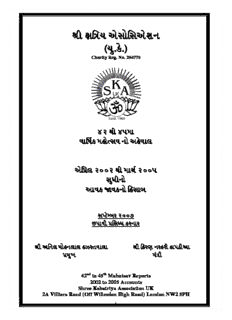
42-45 Mahotsav Reports

Convergent close-coupling calculations of two-photon double ionization of helium
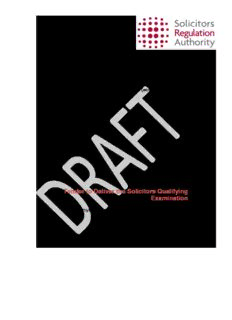
SQE Services Agreement
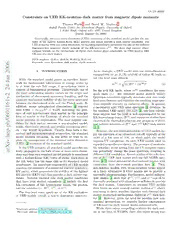
Constraints on UED KK-neutrino dark matter from magnetic dipole moments
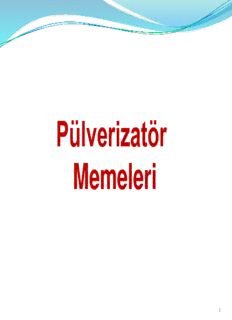
BİTKİ KORUMA MAKİNALARI 6 Kaynak

Roctober #43
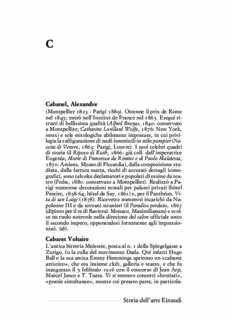
Cabanel, Alexandre Cabaret Voltaire Storia dell'arte Einaudi
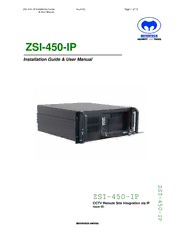
Meyertech ZSI-450-IP CCTV Remote Site Integration via IP User Manual (Issue 02)
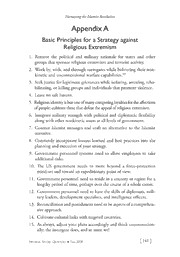
DTIC ADA508750: Harnessing the Islamist Revolution: A Strategy to Win the War against Religious Extremism
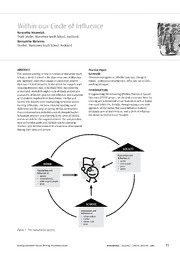
ERIC EJ914600: Within Our Circle of Influence
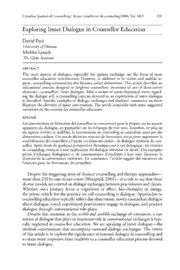
ERIC EJ739915: Exploring Inner Dialogue in Counsellor Education
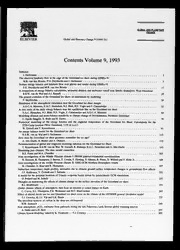
Global and Planetary Change 1993: Vol 9 Table of Contents
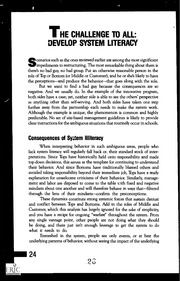
ERIC ED357512: Overcoming Barriers to Educational Restructuring: A Call for System Literacy.
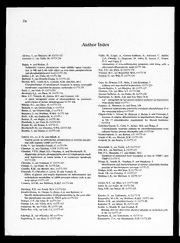
Molecular Cell Research 1993: Vol 1177 Index

Margadarshakaru
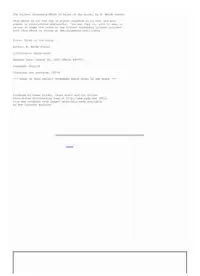
Tales of The Birds by W Warde Fowler

biological control agents in new zealand
